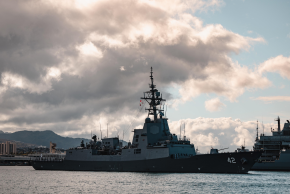So much as we can trust announcements about the late 2040s the AWD replacement is instead of Hunter 7-9.Yes, I thought that BAES Australia was very quiet when the Hunter order was reduced from 9 to 6. It could possibly be that they have been assured that the 3 additional ships will be built in an AAW version rather than in Hunter configuration.
Ideally, those 3 would be additional Tier 1’s with a subsequent batch of 3 being replacements for the Hobart class AWD’s.
Planning is to begin in 2027. I wouldn’t assume that the capability will be replaced in full by crewed destroyers or that any shipbuilder would be (or feel) assured by guarantees from an Australian government.

